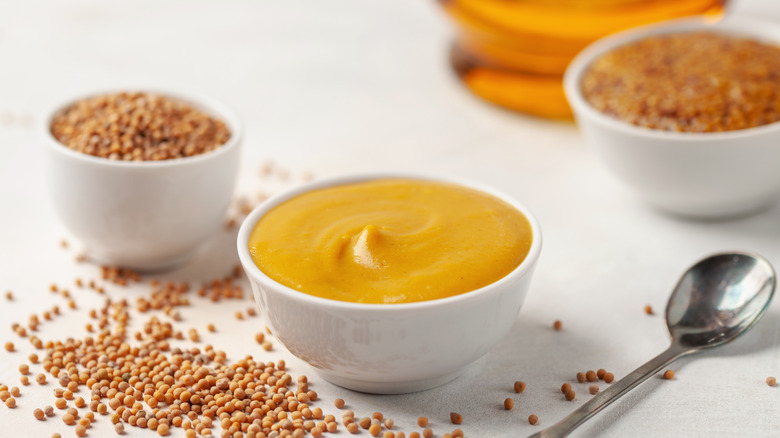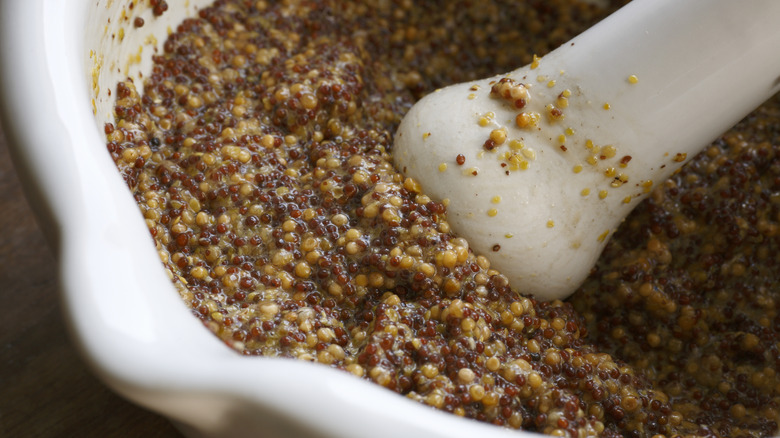The Origins Of Honey Mustard Goes All The Way Back To Ancient Rome
We may receive a commission on purchases made from links.
It's easy to assume that mustard originated in a country such as the United States or Germany — in these nations, this pungent condiment is slathered over hot dogs and bratwurst. But mustard, a sauce made from the seeds of a plant with the same name, actually has much older origins, hailing from the eastern Mediterranean. Used as both a condiment and medicine, it can be traced back to ancient Rome. And though the sweeter version, honey mustard, might seem like a modern-day invention, the Romans can claim this recipe too!
Honey, plain yellow, spicy, or dijon mustard — all styles of the condiment do indeed come from a plant. The variety we know best is the white (also called yellow mustard) plant. It's native to the Mediterranean region, and its seeds were used as the base of honey mustard in Ancient Rome. While there is older evidence of mustard seed being used by the Sumerians and Egyptians as far back as 3000 B.C., the Romans are thought to be the first to grind the seeds with other ingredients to make a condiment.
Another important ingredient for honey mustard is of course honey — it was incredibly important in the Roman Empire, and its popularity was supported by beekeeping. Honey was certainly used in sweets and desserts, but it was used just as frequently used in savory dishes and cooking, as we see in the honey mustard recipe.
How the Romans made and used honey mustard
One old honey mustard recipe can be traced back to a 4th century Roman agronomist named Palladius, who created many recipes for commoners. Palladius' recipe uses a base of white mustard seeds, which are ground down with a mortar and pestle. Then, olive oil, honey, and white wine vinegar are incorporated to create a thick sauce. You may notice that salt is missing here — most modern-day mustards use this mineral, but it was more expensive and difficult to come by during the time of this recipe.
This is just one recipe, and as you can see, it is not very different from modern-day mustard. Some mustards of the past were likely made with grape must, or grape juice, as the word mustard is derived from a Latin phrase, "mustum ardens," which translates to "burning must." Burning references the pungency of the seeds when their cells are broken and mixed with liquid.
Today, honey mustard is used to glaze meat and as a tangy-sweet dressing or dip. While the ancient Romans may not have had something like honey mustard pretzel bites, their use of this condiment wasn't so different from how we use it today. As many modern-day cultures do (especially the Germans and French), prepared mustard was used as a marinade and sauce for meats. Wild game such as venison, hare, and boar were often cooked in dressings that included mustard, honey, and vinegar. Pig and goat were also paired with this style of sauce.

